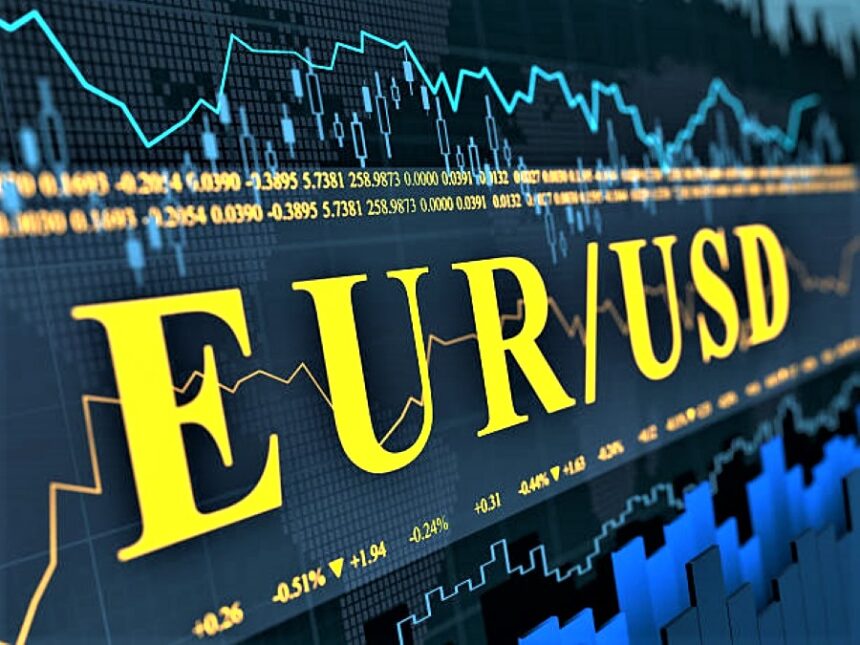EURUSD Bounces After Brief Slide to 1.1213
The EURUSD pair had initially plummeted to intraday lows of 1.1213, reacting sharply to the Dollar’s strength. However, the pair has since managed to trim losses, climbing to 1.1275 at the time of writing.
This modest rebound reflects a temporary cooling of the Dollar’s momentum as traders digest the legal and political implications of the court ruling. Still, analysts caution that a prolonged appeal process could inject fresh uncertainty into markets, potentially limiting further Euro gains.
Greenback Surges as Court Strikes Down Tariffs
In a dramatic turn during the Asian trading session, the US Dollar soared to 10-day highs after the US Court of International Trade ruled unanimously to block the controversial trade tariffs championed by former President Donald Trump. The court’s decision delivered an unexpected jolt to global markets, bolstering risk appetite and shaking up forex sentiment across the board.
The ruling declared that Trump’s “Liberation Day” tariffs, previously imposed without congressional approval, were unconstitutional. The court emphasized that regulating trade and levying tariffs remains the exclusive prerogative of Congress, not the Executive Branch.
This landmark legal rebuke saw investors rotate into US assets, believing the ruling may curtail inflationary fears and ease pressure on the Federal Reserve. As a result, the US Dollar Index (DXY) surged past the psychologically important 100.00 mark, up 1.8% from last week’s lows.
EURUSD Struggles Amid Weak Economic Data
While legal fireworks in Washington lifted global sentiment, the Eurozone remained under pressure due to disappointing macroeconomic figures. In Germany, the unemployment rate held steady at 6.3%, but rising layoffs painted a darker picture for the labor market outlook.
French data also missed expectations:
- Nonfarm Payrolls contracted -0.1%, contrary to a flat forecast.
- Consumer Spending rose just 0.3%, falling short of the 0.8% estimate.
These readings reflect persistent fragility in the Eurozone economy, raising questions about the European Central Bank ability to steer the region away from stagflation or a recession. For the Euro, such data acts as a headwind, limiting any upside momentum even when the Dollar weakens.
Risk Appetite Returns, but for How Long?
Global equities rallied on the back of the court’s decision. Asian stock markets recorded healthy gains, while futures for Wall Street and European indices also pointed higher. This broad-based bounce reflects investors’ relief that a potential source of inflationary pressure—Trump-era tariffs—has been neutralized, at least temporarily.
Yet, the US Government has already appealed the court’s decision, questioning its legal authority. This move signals a potentially drawn-out battle that may mute optimism or cause stop-start volatility in Dollar-denominated trades.
Moreover, some market watchers warn that if the appeal is successful or if Congress backs new tariff legislation, inflation fears could resurface, dragging down risk sentiment once again.
Fed Easing Hopes Take a Hit
In response to the court ruling, rate cut expectations have been recalibrated. Prior to the decision, futures markets priced in 50 basis points of cuts for the remainder of 2025. Post-ruling, this has dropped to 42 basis points, reflecting the view that easing inflationary fears reduce the urgency for aggressive monetary accommodation.
The Federal Reserve’s minutes, released Wednesday, revealed deep concerns over the risk of stagflation—a combination of low growth and high inflation. In such a scenario, the Fed may be forced to choose between supporting employment or reining in price increases, which would impair confidence in both the Dollar and US equity markets.
But for now, traders seem to be betting on stability, assuming that the Fed may delay further cuts if inflationary risks truly recede.
Market Focus Shifts to US GDP and PCE Data
Looking ahead, attention turns to the second estimate of Q1 US GDP and upcoming speeches from several Fed officials. These events could further refine market expectations regarding Fed policy, especially ahead of Friday’s release of the Personal Consumption Expenditures (PCE) Price Index—the Fed’s preferred measure of inflation.
If GDP surprises to the upside or if PCE data shows persistent inflationary pressures, this could reinforce the Greenback’s strength, pushing EUR/USD lower again.
On the other hand, if the data disappoints, particularly on the inflation front, it may renew rate cut expectations and allow the Euro to regain lost ground.
Currency Heatmap: EURUSD Weakness Stands Out
As per the latest currency strength table, the Euro remains broadly weaker against its major peers today. The Euro posted modest gains only against the Swiss Franc (+0.19%) while suffering against most other majors, including the US Dollar (-0.13%), Australian Dollar (-0.42%), and Canadian Dollar (-0.26%).
This underperformance reflects not just weak data, but also a general lack of bullish catalysts for the common currency. With political uncertainty simmering across parts of the bloc and economic recovery still tepid, the Euro faces an uphill battle even as temporary Dollar weakness opens windows for gains.
Short-Term EURUSD Outlook: Key Levels to Watch
Technically, EURUSD support is now seen at 1.1213, the intraday low, and further down near the 1.1180 region. Resistance lies at 1.1280, followed by 1.1320, the latter being a critical level that capped the pair’s recent rallies.
Momentum indicators are neutral, suggesting that any move beyond these technical barriers would require a clear directional catalyst, most likely from US economic data or additional Eurozone updates.
For intraday traders, volatility may remain elevated as markets digest the evolving legal narrative around the US tariff case and the implications for Fed policy.
[faq-schema id=”39711″]









